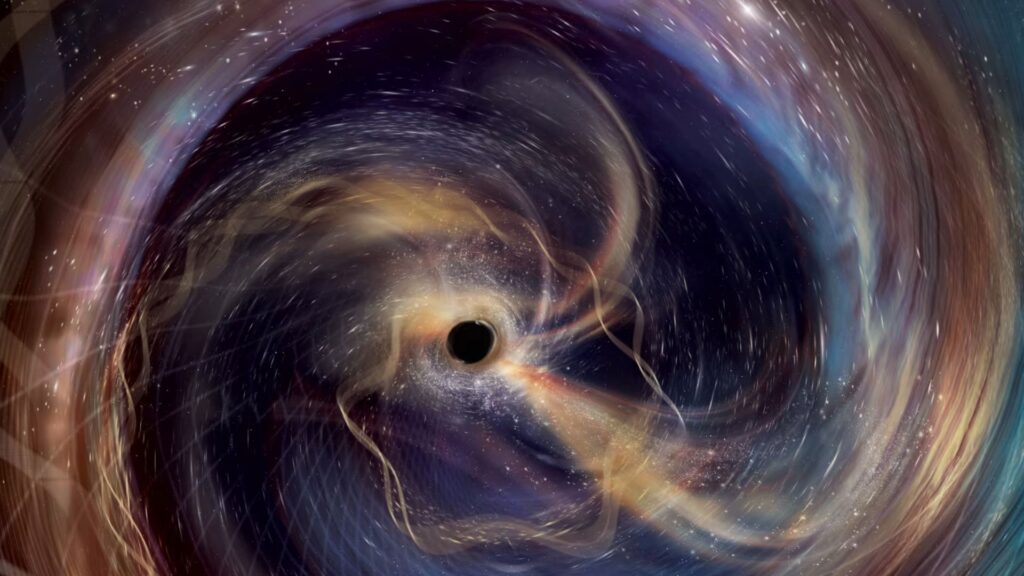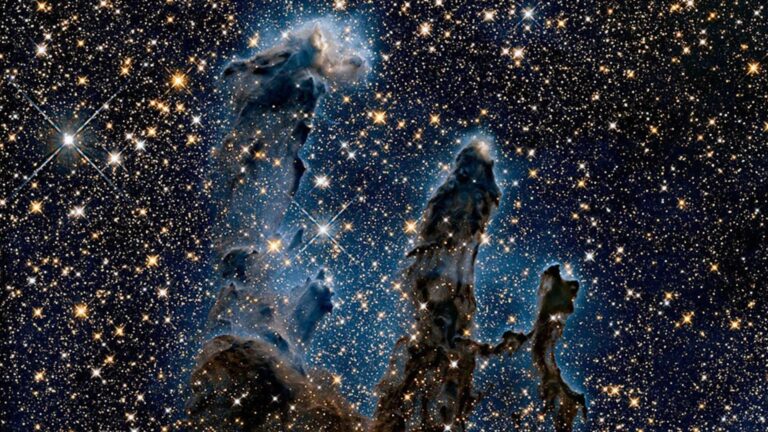
Aurore Simonnet (SSU/EdEon)/LVK/URI
Recent black hole research has delivered groundbreaking confirmations of fundamental physics while unveiling phenomena that challenge our understanding of cosmic formation processes. The most significant discovery came through gravitational wave event GW250114, detected in January 2025, which provided the clearest black hole merger signal ever recorded and definitively confirmed Stephen Hawking’s area theorem (Physical Review Letters).
Gravitational Wave Breakthrough
The LIGO-Virgo-KAGRA Collaboration announced that GW250114 achieved a signal-to-noise ratio of approximately 77-80—far clearer than previous detections and dramatically stronger than the 42 SNR of GW230814. This exceptional clarity enabled the first secure identification of Kerr overtones and provided unambiguous evidence for Hawking’s area theorem, proposed in 1971, which states that when black holes merge, the total surface area cannot decrease (Wikipedia).
The merger involved two black holes, each roughly 30-40 times the mass of the Sun, located 1.3 billion light-years from Earth. The combined surface area expanded from 240,000 square kilometers to 400,000 square kilometers—growing from roughly the size of Oregon to that of California. “This is the first incontrovertible confirmation of the law,” said Sylvia Biscoveanu, formerly a NASA Einstein Fellow at Northwestern University (Northwestern University).
Ancient Black Hole Growth Discovery
NASA’s Chandra X-ray Observatory identified a black hole growing at one of the fastest rates ever recorded. The object, designated RACS J0320-35, weighs approximately one billion solar masses and lies 12.8 billion light-years from Earth, visible when the universe was only 920 million years old. Remarkably, it’s growing at 2.4 times the theoretical Eddington limit—the maximum rate at which black holes typically consume matter (NASA Chandra).
“It was a bit shocking to see this black hole growing by leaps and bounds,” said Luca Ighina of the Harvard-Smithsonian Center for Astrophysics, who led the study. This discovery suggests that supermassive black holes could have reached enormous sizes through conventional formation mechanisms—starting with stellar-mass origins rather than requiring exotic processes—if they sustained such rapid growth rates for extended periods (MoneyControl).
Webb Captures Massive Stellar Jet
The James Webb Space Telescope captured an enormous stellar jet stretching 8 light-years across within the nebula Sharpless 2-284 (Sh2-284), originating from a forming star about 10 times the Sun’s mass located 15,000 light-years away. The jet travels at hundreds of thousands of miles per hour, representing twice the distance between the Sun and Alpha Centauri (Space.com).
“We didn’t really know there was a massive star with this kind of super-jet out there before the observation,” explained Yu Cheng of the National Astronomical Observatory of Japan. This discovery provides compelling evidence that stellar jets scale with the mass of their parent stars, supporting the core accretion theory of massive star formation and offering insights into stellar processes in low-metallicity environments similar to the early universe (Chalmers University).
These discoveries collectively advance our understanding of black hole physics, confirm theoretical predictions formulated decades ago, and provide unprecedented windows into both ancient cosmic phenomena and ongoing stellar formation processes throughout our galaxy.












